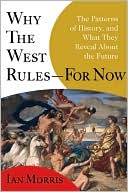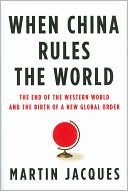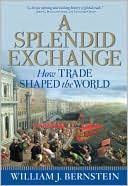Why the West Rules--for Now: The Patterns of History, and What They Reveal About the Future
Search in google:
Sometime around 1750, English entrepreneurs unleashed the astounding energies of steam and coal, and the world was forever changed. The emergence of factories, railroads, and gunboats propelled the West’s rise to power in the nineteenth century, and the development of computers and nuclear weapons in the twentieth century secured its global supremacy. Now, at the beginning of the twenty-first century, many worry that the emerging economic power of China and India spells the end of the West as a superpower. In order to understand this possibility, we need to look back in time. Why has the West dominated the globe for the past two hundred years, and will its power last?Describing the patterns of human history, the archaeologist and historian Ian Morris offers surprising new answers to both questions. It is not, he reveals, differences of race or culture, or even the strivings of great individuals, that explain Western dominance. It is the effects of geography on the everyday efforts of ordinary people as they deal with crises of resources, disease, migration, and climate. As geography and human ingenuity continue to interact, the world will change in astonishing ways, transforming Western rule in the process.Deeply researched and brilliantly argued, Why the West Rules—for Now spans fifty thousand years of history and offers fresh insights on nearly every page. The book brings together the latest findings across disciplines—from ancient history to neuroscience—not only to explain why the West came to rule the world but also to predict what the future will bring in the next hundred years. Library Journal Archaeologist Morris (Classics & history, Stanford Univ.; coauthor, The Greeks: History, Culture, and Society) draws on his vast knowledge of the ancient world in a risky attempt to make sense of the future as well as our past. He posits four benchmarks for comparing societies: their success or failure in energy capture, organization/urbanization, war making, and information technology/literacy. For each criterion, he provides measures of comparison that allow him to address the question of the West's dominance over the East in the past two centuries and to ask whether the West's lead is sustainable. He admits that the measures he uses are crude but argues that they allow us to examine dynamics of social change from early times onward. He predicts that, barring catastrophe, China will take the lead in 20 to 50 years. As with Jared Diamond's Guns, Germs, and Steel and Collapse, Morris's conclusions will provoke controversy, but he asks the right questions. Ultimately, his book is more successful in its goals than Diamond's. VERDICT Accessible and solid, this may be as popular as Diamond's work. It should be in every library.—David Keymer. Modesto, CA
List of IllustrationsIntroduction 3PART I1 Before East and West 392 The West Takes the Lead 813 Taking the Measure of the Past 135PART II4 The East Catches Up 1755 Neck and Neck 2276 Decline and Fall 2807 The Eastern Age 3318 Going Global 3849 The West Catches Up 43410 The Western Age 490PART III11 Why the West Rules ... 55712 ...For Now 582







